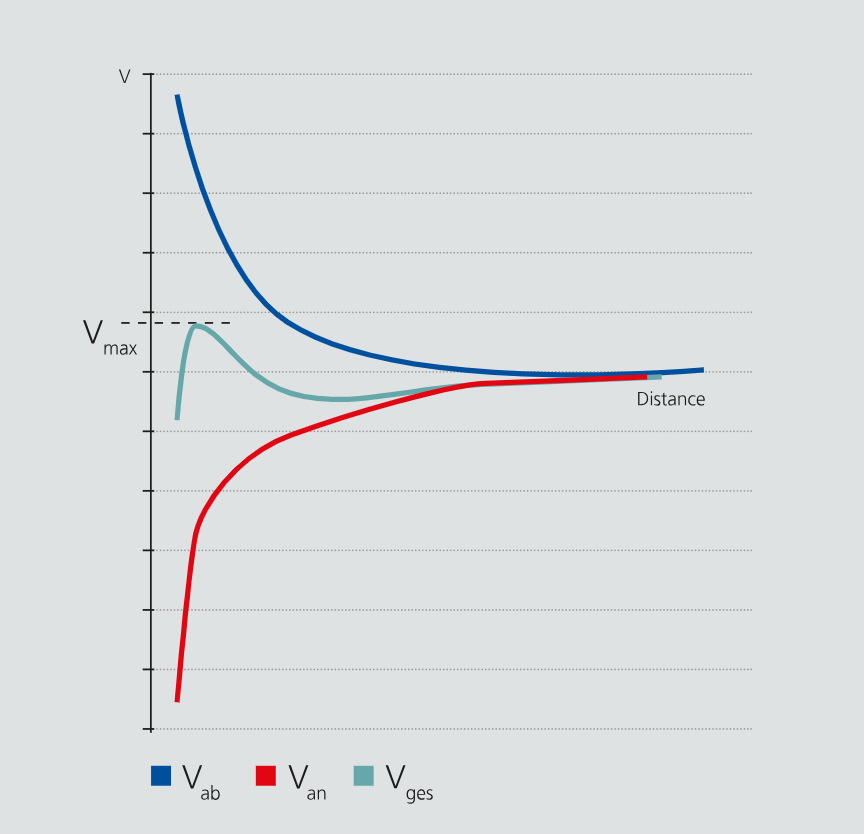- Additives
- Instruments
Dispersing additives are needed to stabilize the state achieved after the pigment grinding (fine distribution of the pigment particles in the binder solution) for a long period of time, i.e. to prevent the flocculation of the pigments.
Flocculation is caused by the attractive London-van der Waal forces occurring between the particles. These forces are effective only across a small distance, but the Brownian molecular motion causes the particles to collide time and again or at least causes them to become too close to each other and therefore creates flocculation.
In order to stabilize a system against flocculation, repelling forces must be used between the particles. The interaction of the attracting and repelling energies between the particles is usually represented in the form of potential curves. The total of both curves results in the total energy.

Potential curves: Repelling energy (Vab), attracting energy (Van) and the total (Vges) as a function of the particle distance. The maximum in the curve of the total energy (Vmax) represents an energy barrier that prevents flocculation. Only particles with a greater thermal energy can conquer the barriers and flocculate.
Dispersing additives adsorb on the pigment surface and bring about considerable repelling forces between the pigment particles. This keeps the particles at a distance and reduces the tendency towards uncontrolled flocculation. In practice, this takes place by means of electrostatic repulsion and/or steric stabilization. Both stabilization measures are described below.
Deflocculation generates rather Newtonian flow characteristics along with generally reduced viscosity. This, in turn, improves leveling behavior and enables higher pigment loading.
Due to the small particle size of the deflocculated pigments, high gloss is obtained and color strength is increased. Likewise, transparency or opacity is increased, dependent upon whether the respective pigment was designed by the manufacturer to be transparent or opaque. Deflocculation leads in general to an improved, more efficient pigment utilization, which (especially in the case of the sometimes rather expensive organic pigments) is of economic significance.
The flocculation level also has an influence on the color of a pigment: if, for example, a system tends to flocculate upon storage, then color change can result. In situations where this is especially critical (such as in the base component of a mixing system or with very high-quality coating systems), the only way to produce coatings with a constant and defined color is through complete deflocculation. Generally speaking, a good deflocculation of all pigments is extremely beneficial and desirable for all pigmented topcoat systems.
On this website we use cookies and similar functions to process end device information and personal data. The processing is used for purposes such as to integrate content, external services and elements from third parties, statistical analysis/measurement, personalized advertising and the integration of social media. Depending on the function, data is passed on to up to 9 third parties and processed by them. This consent is voluntary, not required for the use of our website and can be revoked at any time using the icon on the bottom left.